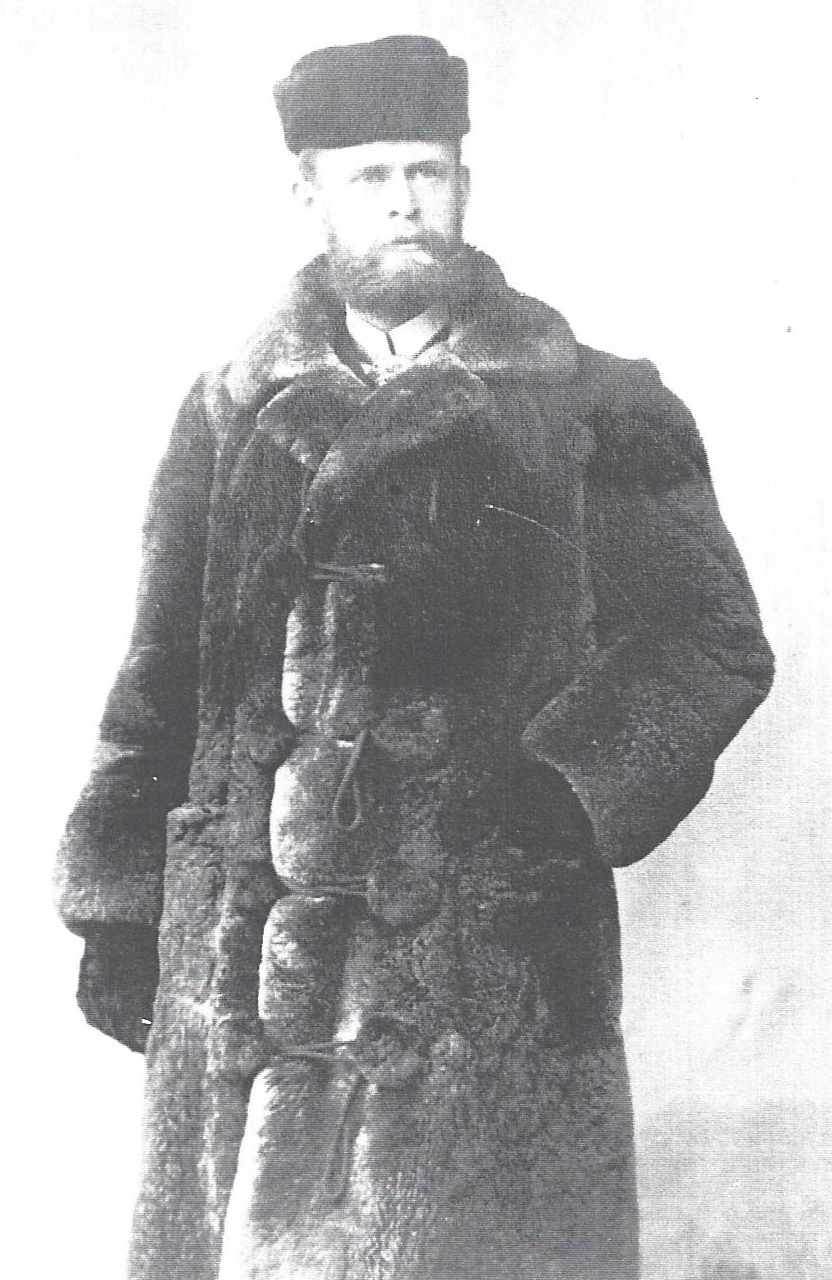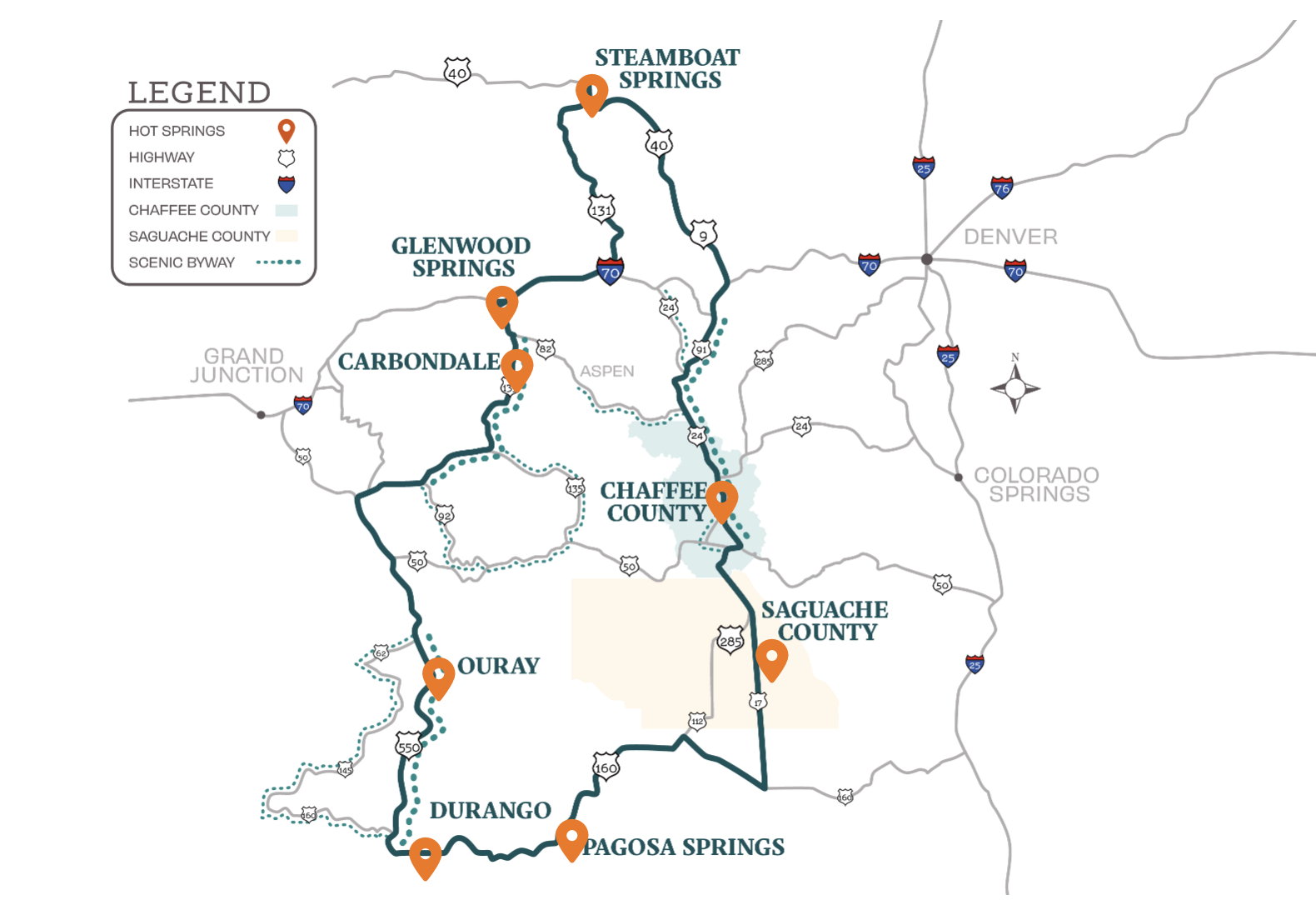Colorado has long been a place to relax and enjoy the natural health benefits of mineral hot springs. Recently, when several journalists were visiting Glenwood Hot Springs Resort to try out the new Yampah Mineral Baths, they asked about the oldest hot springs attractions in Colorado. Vicky Nash, founder of the Hot Springs Connection conference, previous executive director of the Hot Springs Association, and a founder of the Colorado Historic Hot Springs Loop, was on hand for the gathering and pulled together the following list that includes Glenwood Hot Springs Resort.
We’ll also look at the resort’s rich history more in depth and provide ideas about how to explore the Colorado Historic Hot Springs Loop that encompasses eight destinations and 800 miles. It’s important to note that the Native Americans were among the first to utilize Colorado’s geothermal hot springs before any development happened and named the mother spring that supplies water to Glenwood Hot Springs Resort “Yampah,” meaning big medicine.

1891 Post Card of The Glenwood Hot Springs Pool, photo Courtesy of Glenwood Historical Society
Rich in Heritage & Minerals
Not only are hot springs waters rich in minerals, they are overflowing with history. As Colorado was on the cusp of becoming a state in 1876, and the years before and after, hot springs began attracting visitors to mountain communities like Buena Vista, Durango, Glenwood Springs, Idaho Springs, Ouray, Pagosa Springs and Steamboat Springs.
According to Nash, the 10 oldest hot springs in Colorado include Indian Hot Springs in Idaho Springs (1863); Hot Sulphur Springs in Hot Sulphur Springs (1864); Cottonwood Hot Springs (1878) and Mount Princeton Hot Springs Resort and Spa (1879) in Buena Vista; Wiesbaden Hot Springs in Ouray (1879); The Springs Resort in Pagosa Springs (1881); Durango Hot Springs Resort and Spa in Durango (1882); Old Town Hot Springs in Steamboat Springs (1885); and Yampah Vapor Caves (1887) and Glenwood Hot Springs Resort (1888) in Glenwood Springs.

Glenwood Hot Springs Founder, Walter Devereux
Glenwood Hot Springs Resort History
A rowdy frontier town first known as Defiance was renamed Glenwood Springs and quickly became a world-renowned hot springs destination with Yampah Vapor Caves and Glenwood Hot Springs Resort opening only a year apart in 1887 and 1888. The two are located less than a block apart and offer completely different experiences.
Located on the site of the prolific Yampah Spring that produces 3.5 million gallons of pure mineral springs water a day, Glenwood Hot Springs Resort opened to great fanfare on July 4, 1888. The resort’s history origins date back to 1886 when Walter Devereux, an engineer and silver baron, and his two brothers purchased Yampah Spring and 10 acres of land from Captain Isaac Cooper. Cooper was a Civil War veteran who came to the area in 1882 and dreamt of turning the hot springs into a health spa.
The spring was located on an island situated in the Colorado River. The plan to build the world’s largest hot springs pool began by diverting the natural flow of the Colorado River to the south side of the mid-river island. Construction of the stone diversion wall began in 1886 and building of the aqueduct and pool commenced in early 1888. Devereux also was the founder of nearby Hotel Colorado that opened in 1893.
The D&RG and Colorado Midland Railroad both began railroad service to Glenwood Springs in 1887 and as word of the new hot springs pool, grand hotel and growing community spread, wealthy Victorians, aristocrats, political leaders, movie stars and spiritual believers ventured to the community from around the world.
The draw to Glenwood Hot Springs Resort has always been the 15 naturally occurring minerals in the water that soothe mind, body and spirit with the amenities changing over time to stay current with the times and latest technology. Since 2019, the resort has been unveiling the results of a multiyear improvement plan that so far has included the addition of Sopris Splash Zone in 2019, major upgrades to the Therapy Pool and all pool changing rooms in 2022, introduction of Yampah Mineral Baths in 2024, and the launch of guest room renovations at the 107-room Lodge at Glenwood Hot Springs Resort this fall.
The ownership of the resort has changed very little over the years. Frank Kistler purchased the pool in 1938 and sold it to a group of local businessmen in 1954. The families of the businessmen continue to operate Glenwood Hot Springs Resort and have made many improvements over the years as dedicated stewards of this iconic Colorado attraction.

Colorado Historic Hot Springs Loop
Soak in Colorado history by traveling all or part of the Colorado Historic Hot Springs Loop, a spectacular 800-mile driving route in the scenic western part of the state. It’s the ultimate road trip for relaxation and recreation that showcases eight Colorado geothermal destinations—Steamboat Springs, Glenwood Springs, Carbondale, Ouray, Durango, Pagosa Springs, Saguache County and Chaffee County—for a total of 23 hot springs soaking experiences. Each of the 23 facilities offers unique features like vapor caves, hot pots, terraced pools, travertine formations and fun-filled aquatic centers.
Why are there so many hot springs in this region? The Colorado Historic Hot Springs Loop explains that western Colorado was once covered by a shallow inland sea. After the waters receded during Jurassic and Cenozoic times about 170 to 40 million years ago, there was a major mountain-building period. In a process called plate tectonics, the earth heaved and shifted, giving birth to the Rocky Mountains.
All this geological activity caused pressure and heat to build up deep within the earth. In areas with hot springs, this geothermal heat escapes through fractures and faults in the Earth’s crust, providing pathways for hot water to rise to the surface. These pressure release points are where hot springs proliferate.
The minerals found in hot springs vary depending on the geological composition of the region where they are located. Common minerals found in the springs along the Colorado Historic Hot Springs Loop include calcium, magnesium, sodium, potassium, silica and lithium. These minerals are picked up from the surrounding rocks and dissolved in the superheated water, infusing hot springs with their specific properties.
In some hot springs, the water comes from shallow depths and has relatively low temperatures, ranging from 80˚ to 100˚F. On the other end of the spectrum, there are extremely hot geothermal waters that can reach temperatures of 140˚F or higher. Where the natural springs water is intensely hot, the temperature is amended by allowing the water to cool naturally or by adding cold water.
The Colorado Hot Springs Loop travels along several roads designated as Colorado Scenic Byways and takes a week to 10 days to experience (or more at a slower and more engaged pace). For a sample itinerary from Denver, connect with the loop in Chaffee County and the communities of Buena Vista, Nathrop and Salida along the Top of the Rockies and Collegiate Peaks byways. Then travel south to Saguache County and continue 100 miles southwest to Pagosa Springs.
The next stop is Durango, just 60 miles west. After weaving through the San Juan Skyway and the Million Dollar Highway, Ouray is the next stop 70 miles later. Then connect with the West Elk Loop that traverses 142 miles through wine country, fruit stands, orchards and organic farms on the way to Carbondale. Nestled in the same Roaring Fork Valley and only 13 miles away is Glenwood Springs. Finally, marvel at the 114 miles of canyons and ranchlands along the route to Steamboat Springs to complete the journey.
Many of Colorado’s 10 oldest hot springs are part of the Colorado Historic Hot Springs Loop, and Glenwood Springs is one of the few Colorado communities that have three hot springs attractions: Glenwood Hot Springs Resort, Yampah Vapor Caves and Iron Mountain Hot Springs. Make sure to allot plenty of time to explore Glenwood Springs where you also can enjoy a wide range of other attractions like a mountaintop theme park, community events, outdoor adventures and a vibrant food and beverage scene.